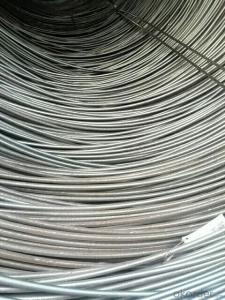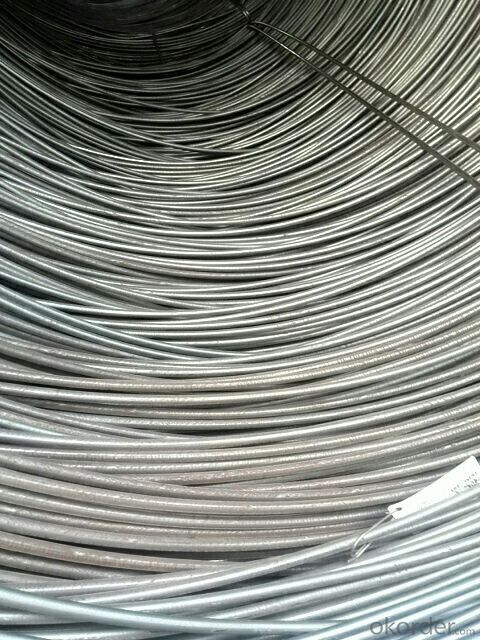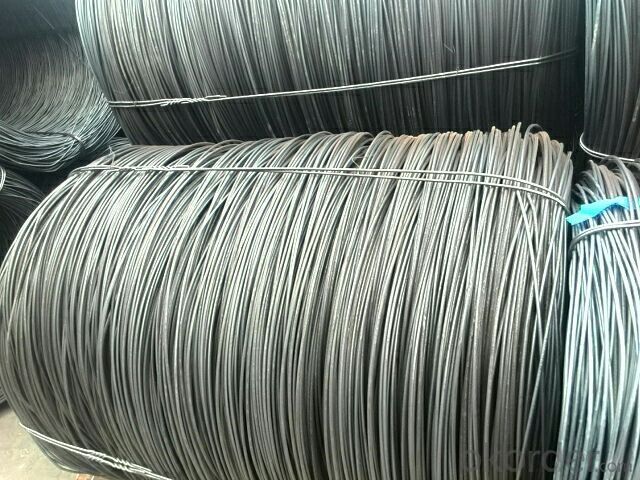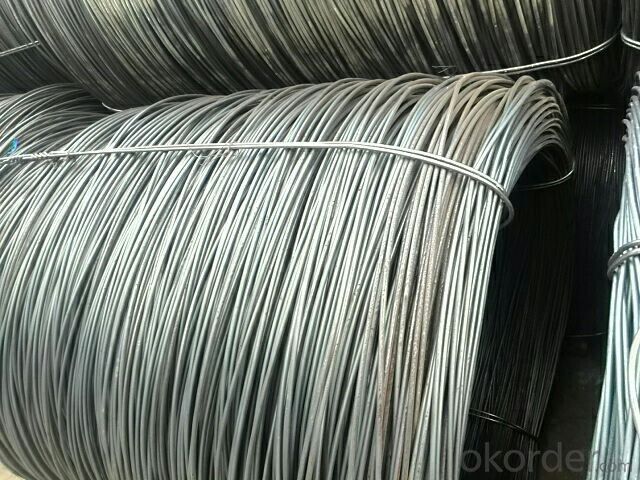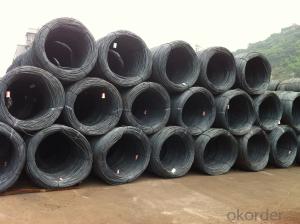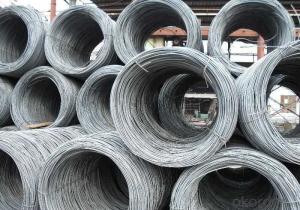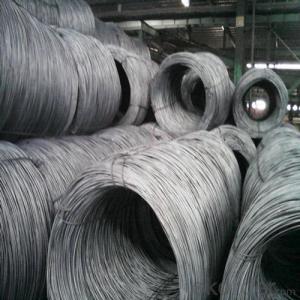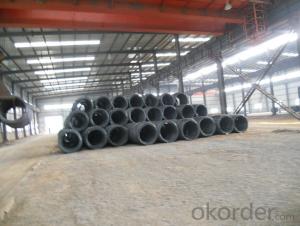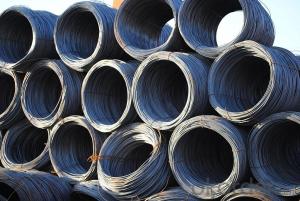Hot Rolled Wire Rod Sae1006-1018B
- Loading Port:
- China Main Port
- Payment Terms:
- TT or LC
- Min Order Qty:
- -
- Supply Capability:
- -
OKorder Service Pledge
OKorder Financial Service
You Might Also Like
Product Description:
OKorder is offering Hot Rolled Wire Rod SAE1006-1018B
at great prices with worldwide shipping. Our supplier is a world-class manufacturer of steel, with our products utilized the world over. OKorder annually supplies products to European, North American and Asian markets. We provide quotations within 24 hours of receiving an inquiry and guarantee competitive prices.
Hot Rolled Wire Rod SAE1006-1018B are ideal for structural applications and are widely used in the construction of buildings and bridges, and the manufacturing, petrochemical, and transportation industries.
Product Advantages:
OKorder's Hot Rolled Wire Rod SAE1006-1018B durable, strong, and resist corrosion.
Main Product Features:
· Premium quality
· Prompt delivery & seaworthy packing (30 days after receiving deposit)
· Corrosion resistance
· Can be recycled and reused
· Mill test certification
· Professional Service
· Competitive pricing
Product Specifications:
Steel Grade: Q195/235, SAE1006-1018B Standard: ASTM, GB
Diameter: 5.5mm, 6.5mm, 7mm,8mm,9mm,10mm,12mm,14mm
Type: in coil, coil weight around 2MT Alloy or Not: Alloy
Technique: Hot Rolled Place of Origin: China Mainland
Surface: round, no twisted, light and smooth Brand Name: HSKY
Chemical Composition: (Please kindly find our chemistry of our material based on Q195、Q235A and Q235B as below for your information)
Trademark | Rank | Chemical composition (quality score) % | |||||||
C | Si | Mn | S | P | |||||
| ≤ |
| ≤ | ≤ | |||||
Q195 |
| 0.06-0.12 | 0.30 | 0.25 | 0.050 | 0.045 | |||
Q235 | A | 0.14-0.22 | 0.30 | 0.30-0.65 | 0.050 | 0.045 | |||
Q235 | B | 0.12-0.20 | 0.30 | 0.30-0.70 | 0.045 | 0.045 | |||
Packaging & Delivery of Hot Rolled Wire Rod:
Packaging Detail: products are packed in coil, each coil weight around 2 MT, and then shipped by container or bulk vessel
FAQ:
Q1: Why buy Materials & Equipment from OKorder.com?
A1: All products offered byOKorder.com are carefully selected from China's most reliable manufacturing enterprises. Through its ISO certifications, OKorder.com adheres to the highest standards and a commitment to supply chain safety and customer satisfaction.
Q2: How do we guarantee the quality of our products?
A2: We have established an advanced quality management system which conducts strict quality tests at every step, from raw materials to the final product. At the same time, we provide extensive follow-up service assurances as required.
Q3: Can stainless steel rust?
A3: Stainless does not "rust" as you think of regular steel rusting with a red oxide on the surface that flakes off. If you see red rust it is probably due to some iron particles that have contaminated the surface of the stainless steel and it is these iron particles that are rusting. Look at the source of the rusting and see if you can remove it from the surface.
Images:
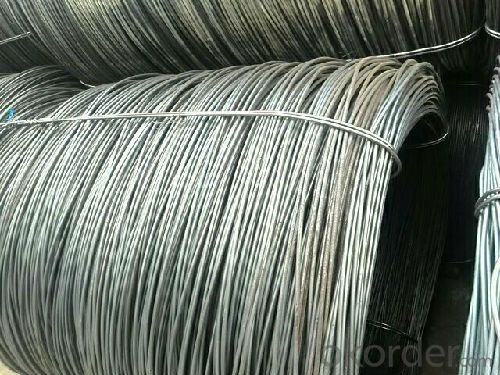
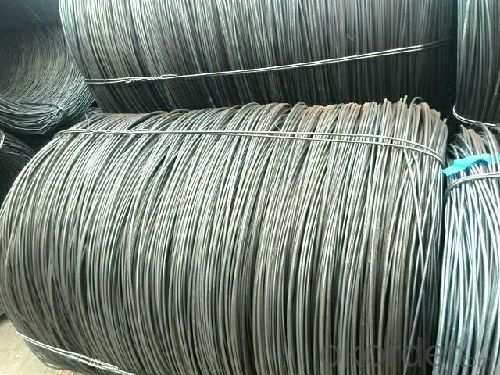
- Q: How is steel wire rod used in the manufacturing of wire forms for automotive seating?
- Steel wire rod is used in the manufacturing of wire forms for automotive seating as it provides the necessary strength and durability required for these components. The wire rod is first processed and shaped into various forms such as springs, clips, and frames, which are then incorporated into the seat structure. These wire forms play a crucial role in providing support, flexibility, and stability to the automotive seats, ensuring comfort and safety for the occupants.
- Q: What are the different mechanical properties of steel wire rod?
- The different mechanical properties of steel wire rod include tensile strength, yield strength, elongation, hardness, and toughness.
- Q: What are the common industry guidelines for steel wire rod professionals?
- The common industry guidelines for steel wire rod professionals include adhering to strict quality control measures, ensuring compliance with safety regulations, maintaining proper handling and storage practices, conducting regular inspections and tests, and keeping up with technological advancements in wire rod production and processing. Additionally, professionals are expected to prioritize customer satisfaction, foster strong communication and collaboration within the industry, and stay updated on market trends and industry standards.
- Q: What are the common production processes for neptunium-coated steel wire rod?
- The common production processes for neptunium-coated steel wire rod include wire drawing, cleaning, surface treatment, neptunium coating, and final inspection.
- Q: How is steel wire rod used in the production of wire mesh for agricultural applications?
- Steel wire rod is used in the production of wire mesh for agricultural applications by being transformed into thin wires that are then woven or welded to form the mesh. This mesh is used in various agricultural applications such as fencing, animal enclosures, crop support, and pest control. The strength and durability of the steel wire rod make the wire mesh suitable for withstanding harsh weather conditions and providing a robust barrier for agricultural purposes.
- Q: How are steel wire rods used in the manufacturing of piano strings?
- Piano strings are made using steel wire rods, which are essential for their production. The strength and durability of steel make it an ideal material for creating strings that can handle the high tension required to produce the desired sound in a piano. To start the manufacturing process, careful selection is done to choose high-quality steel wire rods with specific properties. These rods are typically made of high-carbon steel, providing the necessary strength and resilience for piano strings. Once the steel wire rods are selected, they go through a series of processes to turn them into piano strings. Firstly, the rods are drawn through dies to decrease their diameter and increase their length. This wire drawing process ensures that the wire has the correct thickness for the desired pitch of the piano string. After wire drawing, the steel wire rods undergo annealing and tempering. Annealing involves heating the wire to a precise temperature and then slowly cooling it, enhancing flexibility and reducing internal stresses. On the other hand, tempering includes reheating the wire to a lower temperature and rapidly cooling it, improving its strength and elasticity. Once the steel wire rods have been annealed and tempered, they are ready to be transformed into piano strings. The wire is cut into specific lengths and tightly wound around a core wire, usually made of copper or steel. The winding process is carefully controlled to ensure uniformity and precision in the string's diameter and tension. Finally, the wound strings undergo additional processes like polishing and coating to enhance their durability and tonal quality. These processes protect the strings from corrosion and wear, ensuring that they maintain their sound and longevity over time. In conclusion, steel wire rods are utilized in the manufacturing of piano strings due to their high tensile strength and durability. Through processes like wire drawing, annealing, tempering, and winding, these steel rods are transformed into strings that can withstand high tension and produce the desired sound in a piano.
- Q: How is steel wire rod used in the manufacturing of wire forms for industrial machinery?
- The manufacturing of wire forms for industrial machinery relies heavily on steel wire rod, an essential component. This raw material is extensively used due to its durability, strength, and versatility. Wire forms, intricate shapes created from steel wire rod, serve various purposes in industrial machinery. They can be bent, twisted, or shaped into different configurations to meet specific requirements. Structural components are among the primary uses of steel wire rod in the manufacturing of wire forms. These forms provide stability, strength, and rigidity to the machinery. Steel wire rod undergoes processing and transformation to become wire forms such as springs, clips, brackets, and hooks, which are crucial in holding different parts of the machinery together. Furthermore, steel wire rod finds application in the manufacturing of wire mesh, commonly used as a safety barrier in industrial machinery. Wire mesh made from steel wire rod acts as a protective layer, safeguarding operators and sensitive components from potential hazards. In addition, steel wire rod serves electrical purposes in industrial machinery. It can be transformed into wire forms that function as conductors, enabling the flow of electricity throughout the machinery. This is particularly vital in machines that require precise electrical connections and control systems. Overall, steel wire rod plays a crucial role in the manufacturing of wire forms for industrial machinery. Its strength, durability, and versatility make it an ideal material for creating structural components, safety barriers, and electrical conductors. The absence of steel wire rod would significantly compromise the production of wire forms for industrial machinery.
- Q: How is steel wire rod used in the manufacturing of wire forms for sliding doors?
- Steel wire rod is an essential component in the manufacturing of wire forms for sliding doors. It serves as the primary material for creating the framework and structure of the wire forms. Firstly, steel wire rod is selected for its high tensile strength and durability, making it an ideal material for withstanding the constant movement and stress that sliding doors experience. The wire rod undergoes a series of processes, including drawing and annealing, to enhance its mechanical properties and ensure it meets the required specifications. Next, the steel wire rod is formed into various shapes and sizes, depending on the specific design and requirements of the wire forms. This can be achieved through bending, cutting, and welding techniques. The wire rod is manipulated to create the necessary curves, angles, and dimensions needed to construct the sliding door wire forms. Once the wire forms are shaped, they are further processed to enhance their functionality and aesthetics. This may involve surface treatments such as galvanizing or coating to provide corrosion resistance and improve the overall appearance of the wire forms. Finally, the wire forms are assembled and integrated into the sliding door system. They are typically used to support the door panels, guide the movement of the doors along the tracks, and provide stability and smooth operation. The steel wire rod ensures that the wire forms can withstand the weight of the door panels and endure frequent opening and closing without deformation or failure. In summary, steel wire rod plays a vital role in the manufacturing of wire forms for sliding doors by providing strength, durability, and flexibility. It serves as the backbone of the wire forms, enabling them to function effectively and contribute to the overall performance of sliding doors.
- Q: How is steel wire rod used in the manufacturing of wire rope winches?
- Steel wire rod is used in the manufacturing of wire rope winches as the primary material for the wire rope itself. The steel wire rod is first drawn and shaped to form individual wires, which are then twisted or braided together to create the high-strength wire rope. This wire rope is then incorporated into the winch, providing the necessary tensile strength and durability to handle heavy loads and perform lifting or pulling tasks effectively.
- Q: How is steel wire rod cut to desired lengths?
- Wire drawing is a common method used to cut steel wire rod into desired lengths. By pulling the steel rod through a series of dies, its diameter gradually decreases. This not only shapes the wire to the desired size but also enhances its strength and flexibility. The wire drawing process can be carried out either manually or with automated machinery, depending on the production scale. Once the wire reaches the desired diameter, it can be cut into specific lengths using various cutting techniques, such as shearing or sawing. These cutting methods can be performed manually or with specialized cutting equipment. In conclusion, the process of cutting steel wire rod to desired lengths involves shaping the wire through wire drawing and then using appropriate cutting methods for precision.
Send your message to us
Hot Rolled Wire Rod Sae1006-1018B
- Loading Port:
- China Main Port
- Payment Terms:
- TT or LC
- Min Order Qty:
- -
- Supply Capability:
- -
OKorder Service Pledge
OKorder Financial Service
Similar products
Hot products
Hot Searches
Related keywords
